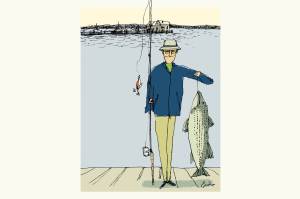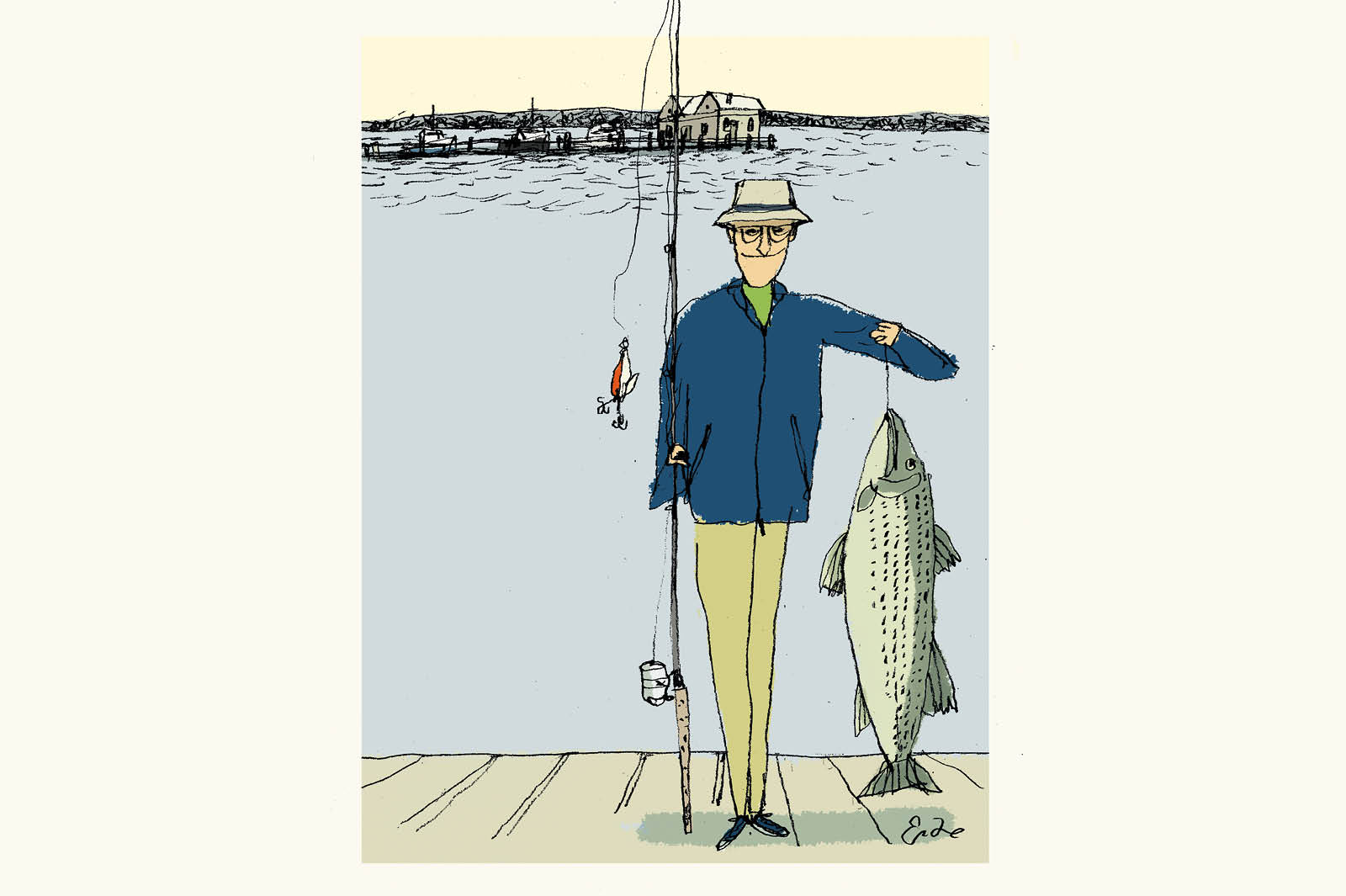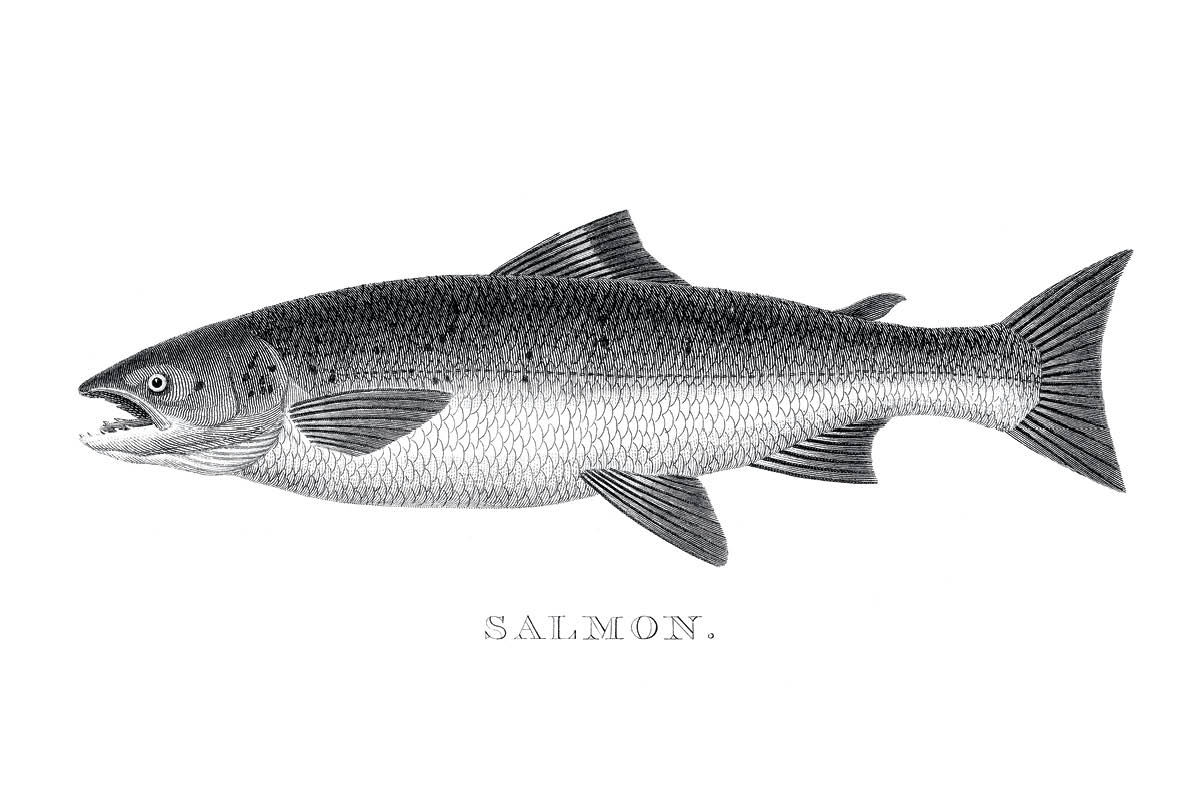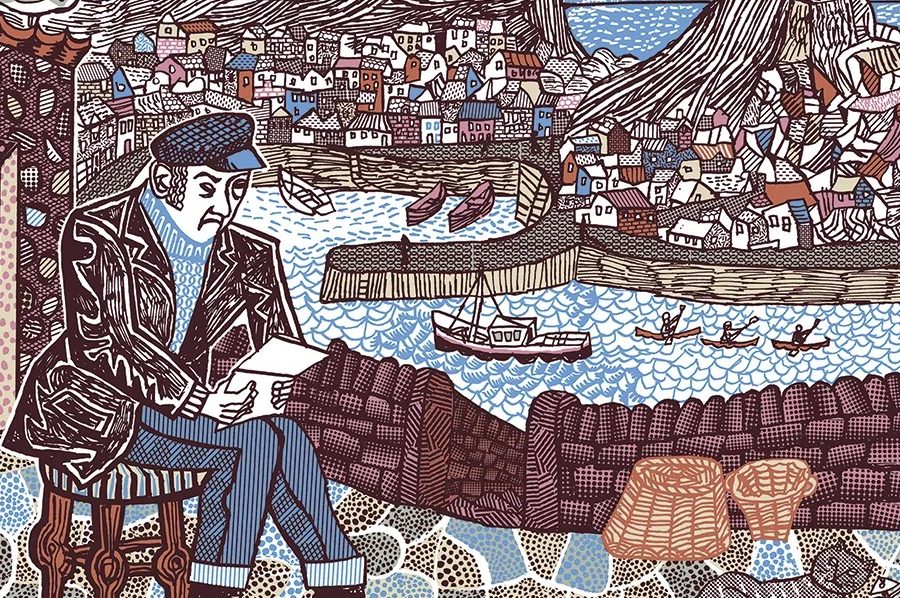Britain’s most popular fish comes with batter, not scales – but America can virtuously say its favorite fish is salmon. Salmon and tilapia, according to AI, but you must never take AI at face value. Nor tilapia, for that matter. Stop me if I’ve already recounted the sad tale in these august pages, but I once – disastrously – tried to serve my relations tilapia. I bathed it in lemon-butter sauce, sprinkled chopped garden-fresh chives on it and nestled it among roasted tomatoes, olives and little baby potatoes in their skins. I even called it whitefish. I really gave it a fair shot.
But pointed questions quickly came sailing toward me. What is this fish? What do you mean, tilapia? Where does it live? What does it eat? What are its desirable attributes? I resorted to my handheld device, only to get a rash of ominous results like “Things you should know before you eat tilapia,” “Tilapia: the benefits and dangers” and “Is tilapia safe to eat?” I hid the phone behind my back. “I don’t know,” I said. “It was cheap, though.” “Exactly! And there’s a reason why!” triumphed the family. They were so cheered by this admission that they ate the tilapia quite happily. I never bought it again.
Salmon is another story. It is always welcome at the table, both in material and topical form. Salmon are the heroes (or, I suppose, the victims) of some of the best fishing stories. I have no fishing stories, personally, as fish flee from any line I hold faster than rats from a sinking ship. But I have acquired quite a repertoire of second-hand tales. The best is that of an enormous Pacific salmon caught by net, out of a popular fishing hole in a creek. If I remember correctly, the salmon swam into a shallow area and began flopping about. The inhabitant of the dwelling on the bank had only to collect a net from the shed and dip it into the water to retrieve several meals’ worth of delicious salmon fillets. It’s like a story of the Garden of Eden from before original sin: dinner hurling itself at one’s feet and flopping there, gasping.
Even better is the sequel: only a few hours later another enormous salmon swam headfirst into a nearby beaver dam, where it got stuck. Not even a net was needed to catch that one: you could walk right up and pull it out by the tail – a three-foot salmon, plucked like an apple from a tree! Talk about earthly paradise. A whole salmon, roasted and brought to the table on a wooden cutting board, makes a magnificent presentation. It takes a few people to eat a whole salmon, though, and so of course fillets are more popular (and easier to cook, since they can be cut into even portions). For some reason I find myself gravitating to fillet recipes that involve something sour, pickled or vinegary. Capers, olives, lemon, balsamic vinegar, Dijon mustard, horseradish – all delicious with salmon.
There is conflicting advice from the authorities on shopping for salmon. Some say you should pick the deepest pink or orange flesh, as it’s a sign of freshness and good flavor. But others demur, saying different species of the fish naturally display different colors. Should you be purchasing a whole salmon, however, everyone agrees that the eyes have it. Clear, plump, shiny eyes are a sign of good, fresh fish; cloudy, sunken eyes are a warning to toss this one back. I should note here that whenever I’ve spent the hefty extra dollar on wild or organic salmon, it’s been worth every penny.
You have to be strong at the fish counter. There’s always the tail end of the fillet sitting on top, looking at you with the same steady gaze as the fishmonger. Guilt invariably strikes as you wonder if it will go to waste if you do not buy it. Do not be psyched out, but insist that your fillets be cut from the wider end of the next piece, if necessary. You’re paying by weight; you may as well get your money’s worth. Or at least that’s what I tell myself. Perhaps after I die, I’ll find myself in purgatory, repenting as the tail ends of salmon fillets swish and whistle about my ears. “We were thrown in the dumpster because of you!” But then I think of all the happy cats that will have stumbled across them and am comforted.
I like Kenji López-Alt’s recipe for pan-fried salmon. He has you heat oil in a cast-iron pan until shimmering, then turn it down to medium-low. Your fillet goes in skin-side down and you press down on it for ten seconds (so the skin is flattened against the hot pan and the layer of fat between skin and flesh is rendered). It cooks almost entirely on one side; you leave it without flipping for between five and seven minutes, until the skin easily releases, and the internal temp is where you want it – 120°F for medium rare. Then you flip it and cook the other side for no more than 15 seconds – and voilà, all done. Crisp, tender, delicious – everything salmon should be.
This article was originally published in The Spectator’s May 2025 World edition.


























Leave a Reply